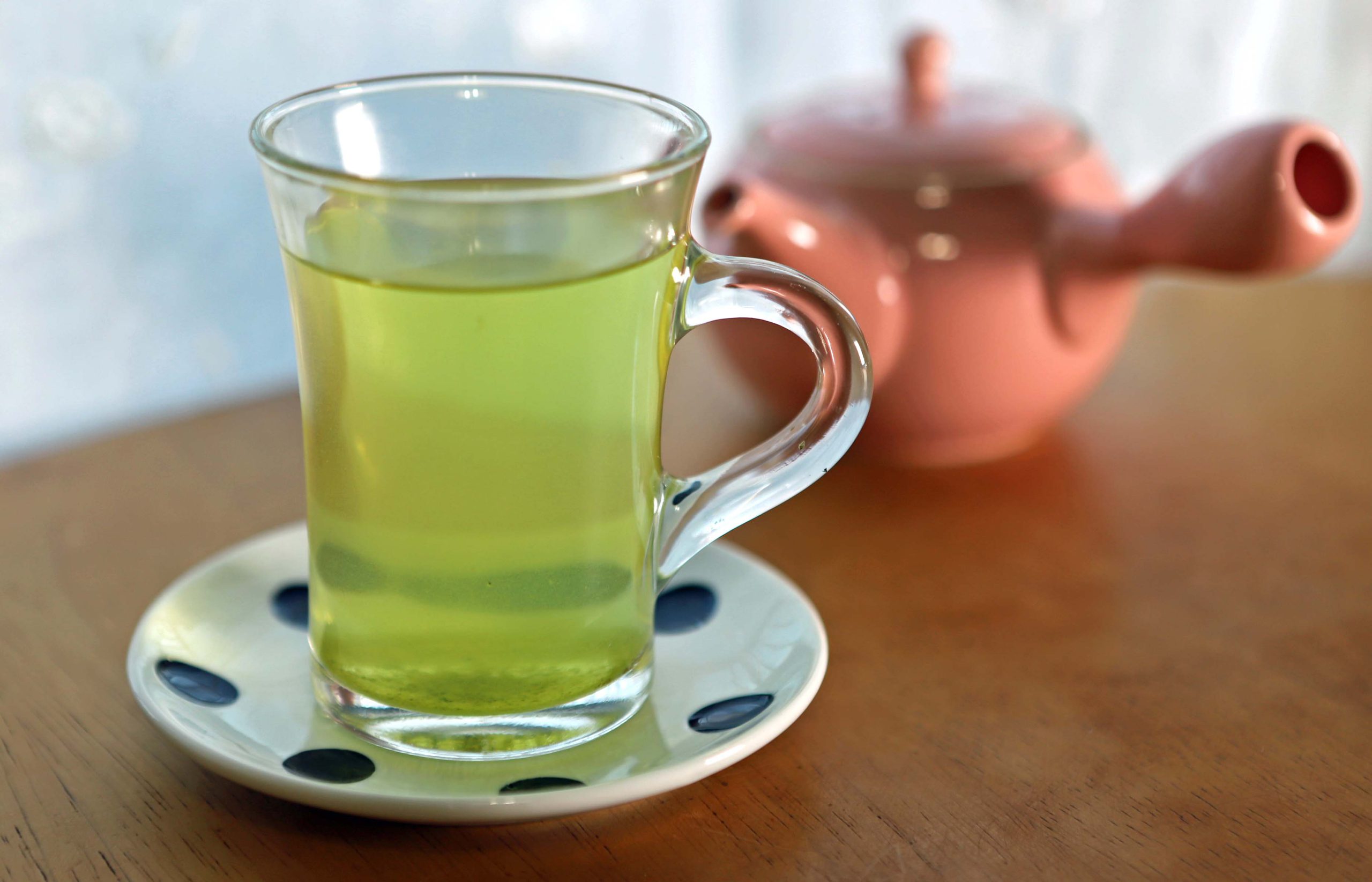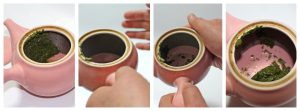MENU
MENU
Making Tea
How to brew Sencha (steamed green tea)

The method of brewing sencha – including Fukamushicha (deep-steamed green tea) and kukicha (steamed green tea with stems) – in this article is an example of CHAMART’s way which is easy, delicious and economical.
There are many ways to brew Sencha.
It is better to change the temperature of the water, amount of tea and brewing time depending on the tea (area of production, plucking time of tea leaves, etc.). Thus, please find your own favorite method while enjoying tea.


Second cup of tea
When the last drop of tea is poured, the used tea leaves will collect around the spout. Before brewing the second cup of tea, tap the bottom of the kyusu on the side opposite the spout with your hand lightly so that the tea leaves fall to the bottom.
 For the second and third cups, pour boiled water directly into the kyusu without cooling it and wait for 1 minute. The flavor of tea will have some astringency and bitterness. You can enjoy the different flavors.
For the second and third cups, pour boiled water directly into the kyusu without cooling it and wait for 1 minute. The flavor of tea will have some astringency and bitterness. You can enjoy the different flavors.
When brewing tea with low temperature hot water, caffeine and catechins which impart astringent flavors do not dissolve in the hot water, giving a more balanced flavor. On the other hand, when brewing tea with high temperature, caffeine and catechins dissolve in the water giving the tea bitterness and astringency.
You can enjoy the different flavors.
Approximate cup capacity
The capacity of the cup on the left of the photo (height 9.5cm, inner diameter 7 cm, inner diameter of the bottom of the cup 4cm): 250ml
Eight tenths of the cup: 200ml
The capacity of the cup right of the photo (height 9cm, inner diameter 7.5cm): 350ml
Eight tenths of the cup: 280ml

湯冷し (yuzamashi) Cooling down boiled water for brewing sencha
The temperature of boiled water cools down about 10℃ each time it is moved to a different vessel. If you leave the boiled water in a cup for about 2 minutes, the temperature of boiled water cools down to 70℃. The cooling temperature range will be slightly different depending on the type of vessel.
If brewing sencha with hot water of 70 to 80℃, the taste of tea will have umami but less astringency.
*Umami is the fifth taste after sweet, sour, salty, and bitter. The main component of umami is glutamic acid of amino acid, etc.
Obiami (帯網) kyusu
A kyusu is a Japanese tea pot with a strainer. There are many types of kyusu.
Obiami kyusu have thin mesh filters. Obi (帯) means a ‘band’ and ami (網) is a ‘mesh’.
Obiami kyusu are good for brewing sencha especially fukamushicha, which has fine tea leaves.
The reverse side of mesh cannot be washed, so it will gradually become dirty through tea incrustation if used for many years.
There are some kyusu shops where the mesh can be replaced in Japan.

*If you over brew the tea and it is too strong, please adjust the taste by adding some hot or cold water.
*Tea leaves contain caffeine. The diuretic, stimulant and anticancer effects of caffeine intake are clinically recognized. On the other hand, excessive intake of caffeine may have a damaging effect on health. Especially, pregnant or breastfeeding women, and children should be careful with the amount of caffeine they intake.
Reference:
農林水産省 カフェインの過剰摂取について
https://www.maff.go.jp/index.html
公益社団法人日本茶業中央会(2013) 新版 茶の機能: ヒト試験から分かった新たな役割 第一刷 一般社団法人農山漁村文化協会
大森正司、阿南豊正、伊勢村護、加藤みゆき、滝口明子、中村羊一郎編(2017) 茶の事典 初版第一刷 朝倉書店
高野實、谷本陽蔵、富田勲、中川致之、岩浅潔、寺本益英、山田新市 (2005) 緑茶の事典 改訂3版 柴田書店
CATEGORY